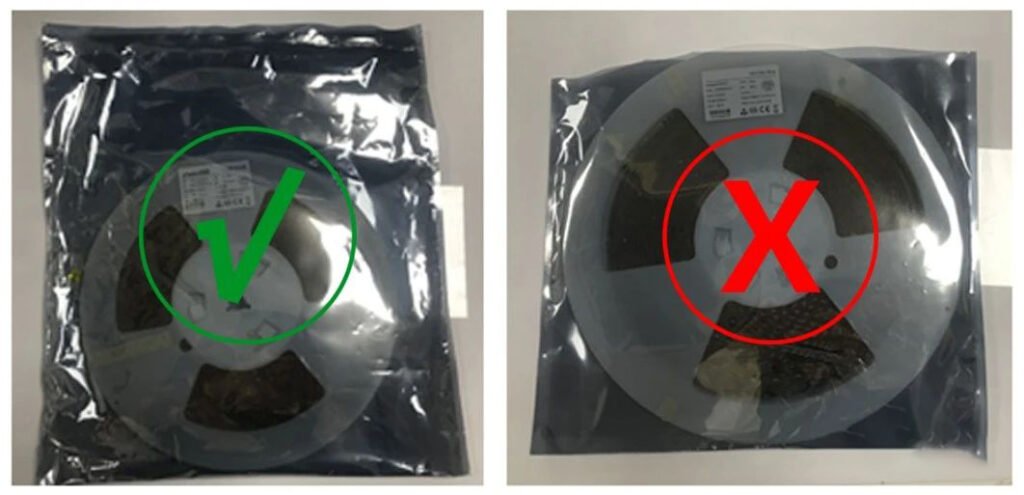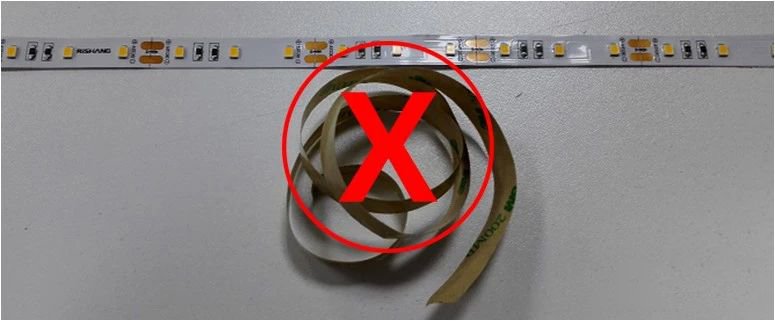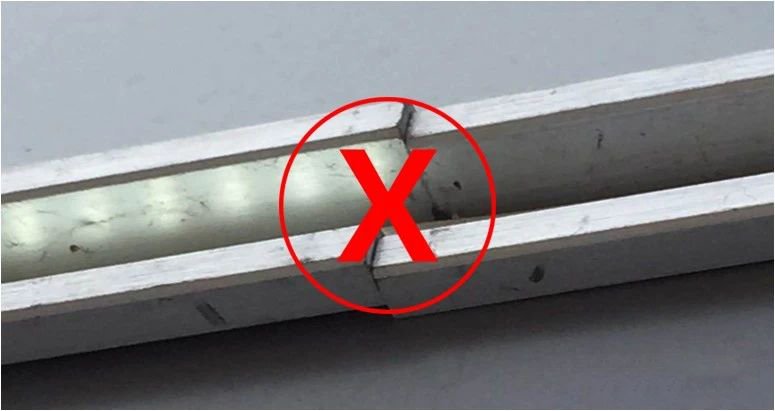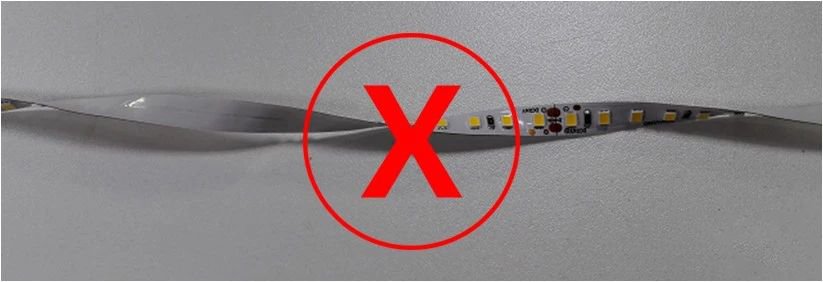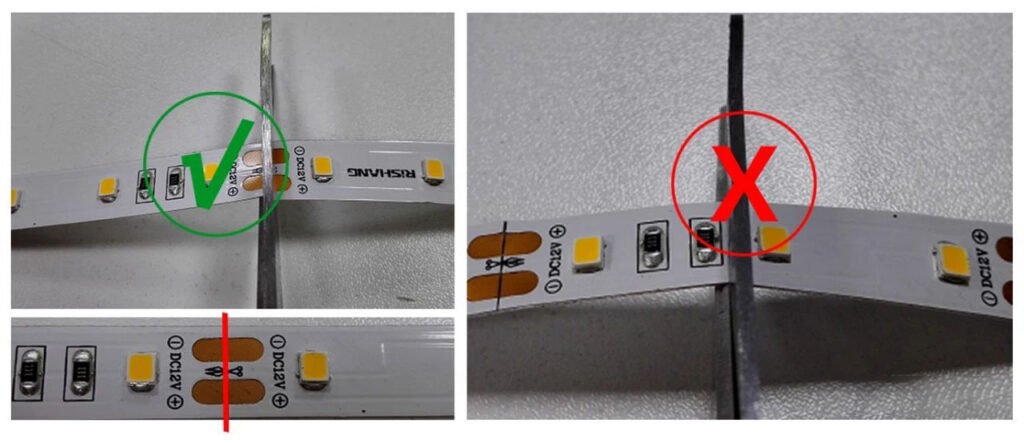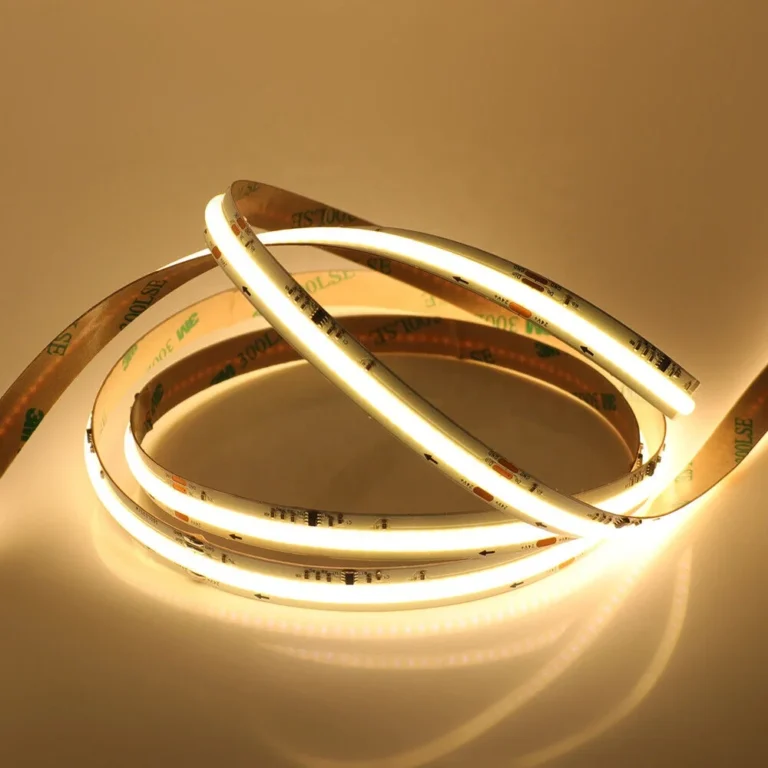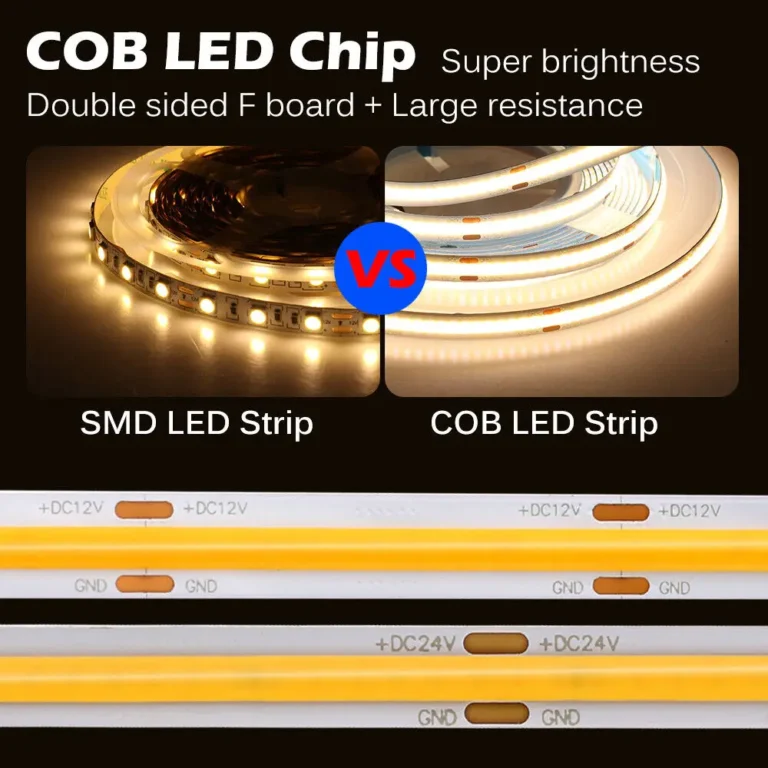Precautions For Installing Led Strips
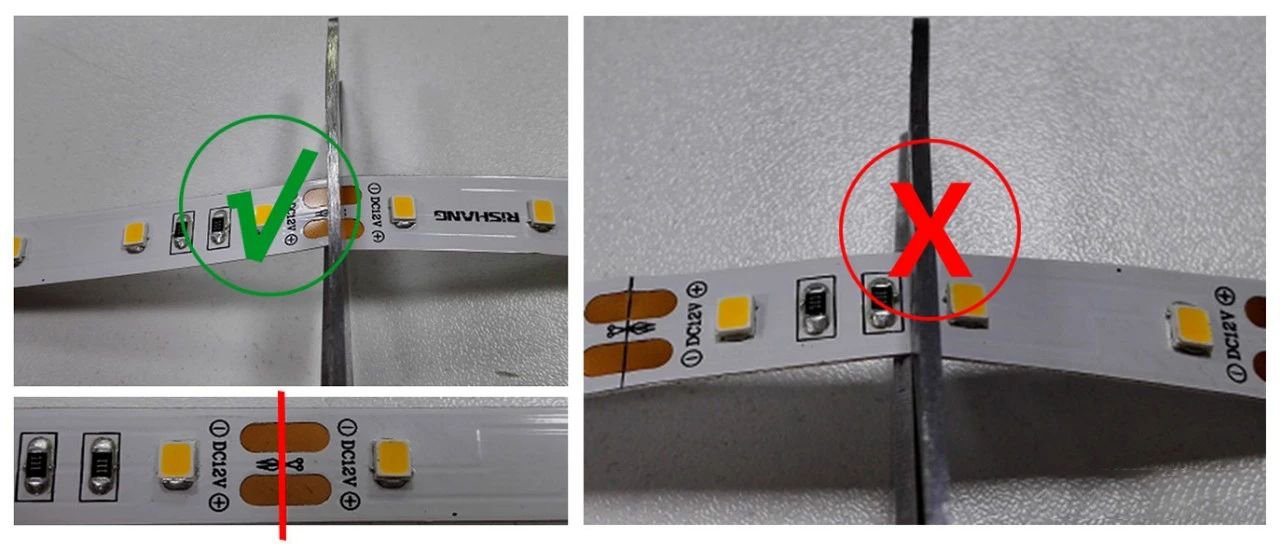
1. Forbid live working
The light strip is a special process of welding LED beads on a flexible circuit board. After the product is installed, it is powered on and lit up, mainly for decorative lighting applications. Common types are 12V and 24V low-voltage light strips. To avoid damage to the light strip during installation and use due to errors, it is strictly prohibited to operate with power on when installing the light strip product.
2. Requirements for storage of light strips
Silicone LED light strip packaging contains moisture-absorbing material that must be stored in an environment free from moisture; storage periods should not be too lengthy – please use or repack immediately after unpacking, rather than opening before use.
3. Check the product before power-on
When the entire strip of lights is not removed from the coil, packaging, or piled up, do not power on the lights to avoid serious heating and LED failure.
4. It is strictly prohibited to press the LED with sharp hard objects
The light strip is soldered to copper wire or flexible circuit board with LED lights. During installation, it is recommended not to press the LED surface directly with fingers or hard objects. It is strictly prohibited to step on the LED lights to avoid damaging the LED lights of the light strip and causing the lamp beads to be damaged and the lights to fail.
5. During installation, pay attention to the cleanliness and tidiness of the surface
Before installing the light strip, keep the installation surface clean and free of dust or dirt to prevent the light strip from sticking together. When installing the light strip, do not tear off the release paper on the adhesive surface all at once, so as to prevent the light strips from sticking together during installation, resulting in damage to the light beads. The surface of the light strip installation platform must be smooth, especially at the light strip connection plate, to prevent the light strip from easily failing and the uneven surface light from affecting the overall effect.
6. Do not twist the light strip during installation
During the installation process, it is strictly prohibited to twist the light strip body to avoid damaging the lamp bulbs or loosening the components. During the installation process, it is strictly prohibited to use external force to pull the light strip, and the tensile force it can withstand is ≤60N.
7. Pay attention to the curvature of the corner during installation
To ensure the life and reliability of the light strip, do not bend the product at right angles when installing the light strip. The bending radius of the light strip should be larger than 50mm to avoid damage to the circuit board of the light strip.
8. Cutting of light strip
When installing the light strip, depending on the length of the installation on site, if there is a need for cutting, the light strip should be cut from the area marked with a scissors mark on the surface of the light strip. It is strictly prohibited to cut from other areas without a cutting mark, as this will cause the units within it to not light up. After cutting the waterproof product, waterproof treatment should be carried out at the cutting position or end.
9. It is strictly prohibited to use acidic sealant
According to authoritative tests, the gases or liquids emitted by acidic adhesives and fast-drying adhesives during curing have a significant impact on the life and luminous efficiency of LED light sources. It is recommended not to use acidic sealants when installing light strips.
Precautions for wiring of light strip products
1. Connect the power according to the product manual
Wiring shall be carried out according to the product specification (specification book) to determine the number of product cascades. Considering the current carrying capacity of the wire and the brightness difference between the beginning and end, it is strictly prohibited to connect too many products in series. (Example: R0060AA single-ended power supply has a maximum cascade length of 5 meters. When using single-ended power supply, the input end of the light strip is connected to the main line, and no more products can be connected in series at the rear end of the light strip.)
2. The main line should not be too long
The length of the main line between the DC power supply and the lamp should be as short as possible, with a maximum length of 5 meters recommended. For long dark troughs, it is recommended to use a 220V main line and multiple power sources for installation.
3. Connect the positive and negative electrodes correctly
The light strip is generally powered by DC12V/24V (direct current), with positive and negative polarity. Grey (or red) is positive, and white (or black) is negative. Reverse connecting the LED light strip will not work; it cannot be directly connected to AC220V of the mains power to avoid burning out the light strip.
4. Insulation treatment
After connecting the light strip conductors to the main line, the connection points should be insulated. If welding is performed on the light strip, use heat shrink tubing or corresponding waterproof plugs for reinforcement or waterproofing.


